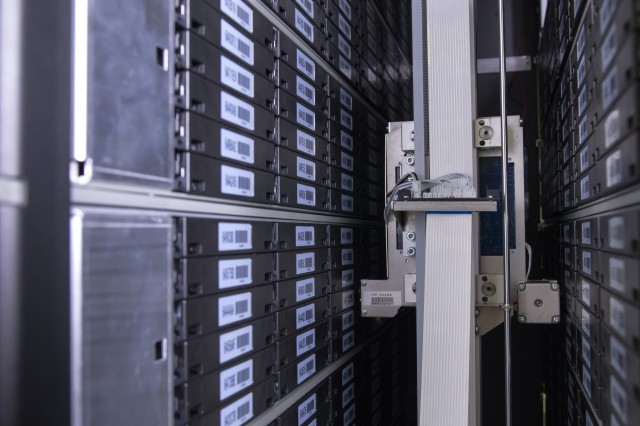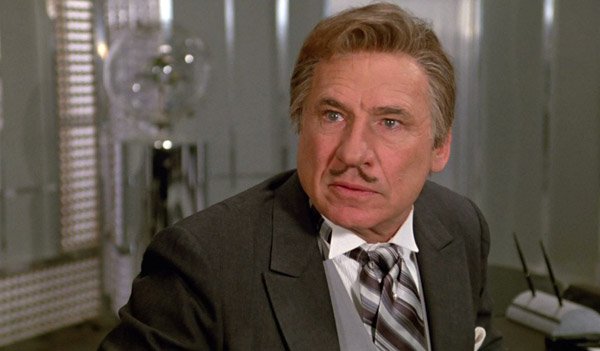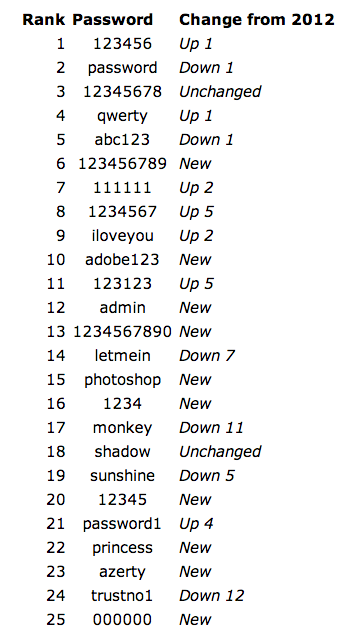-
Content Count
519 -
Donations
$0.00 -
Joined
-
Last visited
-
Days Won
18
Posts posted by CyberAbc
-
-
welcome to our family
-
welcome to our family
-
welcome to our family.
U r right , "Sharing is Caring"
-
welcome to our family
enjoy
-
welcome to our family
-
welcome to our family
-
welcome to our family
-
welcome to our family
-
welcome to our family
-
welcome bro. welcome to our family.
-
welcome to our family
-
catman13 , welcome to our family.
Hope u will find what u looking forward.
Our helping hands always towards u
-
tech is always there

-
 1
1
-
-
google is out of reach.............
-
 1
1
-
-
 Inside Facebook's Blu-ray storage rack.
Inside Facebook's Blu-ray storage rack.Facebook's hardware guru thinks Blu-ray discs might have a brighter future in the data center than in consumers' homes.
We wrote on Wednesday about how Facebook has developed a prototype storage system that uses 10,000 Blu-ray discs to hold a petabyte of data. After that story posted we were able to talk to Frank Frankovsky, VP of hardware design and supply chain operations at Facebook, to find out just why he's so excited about the project.
While the Blu-ray storage system is just a prototype, Facebook hopes to get it in production sometime this year and share the design with the Open Compute Project community to spur adoption elsewhere. If Facebook and others start using Blu-ray discs for long-term archival storage, Blu-ray manufacturers will see a new market opportunity and pursue it, Frankovsky said.
"I think that the media suppliers, especially after all of the community excitement around it with Open Compute, they see a huge opportunity here," Frankovsky said. "Economies of scale could take over really quickly, and they could start producing those discs for the Open Compute community at much lower cost than they do today because, believe it or not, this is one of those areas where really high-capacity Blu-ray discs are in relatively low demand on the consumer side and in relatively high demand on the data center side."
Facebook VP Jay Parikh discusses cold storage and Blu-rays.Facebook intends to use Blu-rays for "cold storage," data that can't be thrown out but may not be accessed for many years, if at all. The best near-term use case is backups of photos and videos, but the discs could also be used for any data that Facebook is required by law to retain for a certain number of years.
Facebook's cold storage today is entirely on spinning disks. The prototype Blu-ray system is estimated to be 50 percent cheaper than the disk-based cold storage, and 80 percent more energy efficient.
The discs are housed in a fancy rack that holds 24 magazines, with each magazine holding 36 cartridges, and each cartridge holding 12 Blu-ray discs, for a total of 10,368. A robot lives and works inside the rack.
"We have a robotic picker that will go to a specified magazine and then locate a cartridge, it will unlock that cartridge, removing the drawer, and a picker will go down and is able to select a specified disc in that 12-disc arrangement," Facebook's Giovanni Coglitore said in a video demo posted yesterday.
When the robot isn't working, the rack consumes virtually no power, he said.
"Each disc is certified for 50 years of operation; you can actually get some discs that are certified for 1,000 years of reliability," Coglitore said. "Because the media is separate from the drives, if you ever have a drive issue, you simply replace the drive, and you won't have to replace the data within a disc. From a reliability and operational standpoint it's quite elegant and efficient."
Facebook is careful in how it's rolling out the optical storage system to production.
As Facebook does with other new technologies, "we'll start it out in what we call shadow testing," Frankovsky said. "Until it's proven, we'll take relatively small quantities, and we'll just mirror data from what's in production and shadow that data to the optical rack."
While Blu-ray can't match the performance of hard disk drives, that isn't as important for cold storage. Frankovsky also said the Blu-ray system will be "far superior to tape" because of its durability and performance.
It could also provide benefits in recovery from failure. Frankovsky said Facebook uses erasure encoding, which "distributes a file across multiple physical devices so that in any event of a failure of a physical device you can always recreate the file."
With disk drives, "you need to have a relatively aggressive erasure encoding environment where you have a lot more physical spinning disks, so you can sustain multiple failures and be able to recreate the file in any situation," Frankovsky said. Because the predictive annual failure rate for optical discs is lower, "it's quite possible that you won't need to over-provision how much optical capacity you have to be able to get the same level of protection with the complete file rebuild. There's kind of a double goodness there. Bit for bit, it's lower cost, and if we can over-provision less with optical, you can move that needle even further on the cost-saving side."
Separately, Facebook has also considered the use of substandard flash memory for cold storage. The idea is to take "partially good NAND flash which otherwise would have been sold off as thumb drives or potentially even scrap," Frankovsky said.
Flash storage is often thrown out by manufacturers when just a few cells have gone bad, he said. With smart enough software algorithms, "you can be cognizant of where the weak or bad cells are and write around those cells."
The bad flash initiative isn't as far along as the Blu-ray project. But both have progressed pretty quickly since Facebook revealed their existence last year, Frankovsky said. They could end up being important tools as data storage needs grow.
IDC predicts that by 2020 the entire "digital universe" will grow to 40,000 exabytes, or 40 trillion gigabytes.
"A large portion of that is going to be warm to cold data, and we need something better than tape and disk to store it," Frankovsky said.
-
 1
1
-
-
welcome to our family
Enjoy
-
welcome to our family
Enjoy
-
welcome to our family
Enjoy
-
welcome to our family
Enjoy
-
 1
1
-
-
welcome to our family
Enjoy the touch
Our helping hands always towards u

-
Real story - Joshua Bell playing incognito in the metro station
A man sat at a metro station in Washington DC and started to play the violin; it was a cold January morning. He played six Bach pieces for about 45 minutes. During that time, since it was rush hour, it was calculated that thousands of people went through the station, most of them on their way to work.
Three minutes went by and a middle aged man noticed there was musician playing. He slowed his pace and stopped for a few seconds and then hurried up to meet his schedule.
A minute later, the violinist received his first dollar tip: a woman threw the money in the till and without stopping continued to walk.
A few minutes later, someone leaned against the wall to listen to him, but the man looked at his watch and started to walk again. Clearly he was late for work.
The one who paid the most attention was a 3 year old boy. His mother tagged him along, hurried but the kid stopped to look at the violinist.
Finally the mother pushed hard and the child continued to walk turning his head all the time. This action was repeated by several other children. All the parents, without exception, forced them to move on.
In the 45 minutes the musician played, only 6 people stopped and stayed for a while. About 20 gave him money but continued to walk their normal pace. He collected $32. When he finished playing and silence took over, no one noticed it. No one applauded, nor was there any recognition.
No one knew this but the violinist was Joshua Bell, one of the top musicians in the world. He played one of the most intricate pieces ever written,with a violin worth 3.5 million dollars.
Two days before his playing in the subway, Joshua Bell sold out at a theater in Boston and the seats average $100.
This is a real story. Joshua Bell playing incognito in the metro station
was organized by the Washington Post as part of a social experiment about perception, taste and priorities of people. The outlines were: in a commonplace environment at an inappropriate hour: Do we perceive beauty?
Do we stop to appreciate it? Do we recognize the talent in an unexpected context?
One of the possible conclusions from this experience could be: If we do not have a moment to stop and listen to one of the best musicians in the world playing the best music ever written, how many other things are we missing?
TRUE STORY !!!-
 1
1
-
-

Linux was touted as the desktop of the future, but it never succeeded in meeting the needs of average users.
The Linux desktop crew is a hardy bunch. Despite it being abundantly evident that the Linux desktop has lost whatever slim chance it once had to be relevant, Linux advocates continue to wring their hands and say, "We kinda already won!... Sort of."
While it's true to say—and I've been saying it for years—that Linux qua Android now reigns as the "desktop" champion, it's equally true that Linux has completely failed as a desktop operating system.
My personal experience::
The reason is pretty simple: Linux has never been easy or useful enough for normal user
Make ur comment PLZ
-
 2
2
-
-
make ur comment
-

An annual list of the most commonly used passwords, a source of both humor and sadness to the human race, shows a change at the top for the first time in three years.
SplashData, a maker of password management software, started analyzing passwords leaked by hackers in 2011 and for the first two years of its study found that "password" was the most commonly used password, ahead of "123456."
How an epic blunder by Adobe could strengthen hand of password crackers
Engineers flout universal taboo by encrypting 130 million pilfered passwords.
The two switched places in 2013, according to the latest list released over the weekend. The new rankings were influenced by a hack on Adobe that revealed 130 million passwords protected only by reversible encryption. Security firm Stricture Consulting Group was able to reveal the top 100 passwords from the Adobe hack, and "123456" came in first by a long shot. Stricture found 1.91 million uses of "123456" compared to 446,162 uses of "123456789" and 345,834 uses of "password." Only 43,497 people used the password for Druidia's air shield and President Skroob's luggage.
SplashData said it pulled from the Adobe list and others in making its top 25. The rankings were "compiled from files containing millions of stolen passwords posted online during the previous year," SplashData said in its announcement. The SplashData list isn't a carbon copy of the Adobe one, but the Adobe influence is clear, given that SplashData's 10th-most-common password is "adobe123."
As for "123456" becoming the new king, that may be due more to SplashData having a better data set than any actual change in people's password use. The Adobe breach probably contained passwords used over multiple years, and in 2010 Symantec ranked "123456" ahead of "password" as the most commonly used password of all time.
Regardless, the new SplashData list is a good reminder that many Internet users are practically begging to be hacked. If you know someone who fits this category, remind them that it's never too late to start using a password manager that can help create and securely store long, random passwords.
Before we go, here is SplashData's list of the top 25 most common passwords in 2013:

-
 1
1
-




HI :)
in Introduce Yourself
Posted · Report reply
welcome to our family